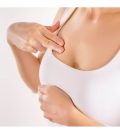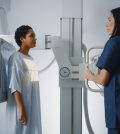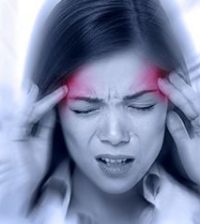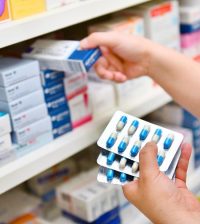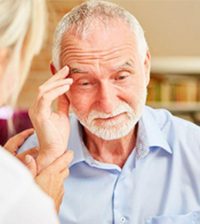- Antibiotics Probably Won’t Ease Your Cough, Even If Infection is Bacterial: Study
- U.S. Medical Drug Shortages Reach Record High
- One in 3 Women With Migraines Say Attacks Occur During Periods
- Pets Are Passing Drug-Resistant ‘Superbugs’ to Their Owners
- Americans Short on Sleep, Stressed Out About It: Poll
- Researchers Probe Moments of Lucid Clarity Among People With Advanced Dementias
- ‘Feeling Like a Burden’ Can Be Motivator for Suicide in Preteens
- Chemicals Stored in Your Garage Could Raise Odds for ALS
- Exercise Could Help Your Heart by Calming the Brain: Study
- Planning Safe Summer Camp Fun for Kids With Allergies & Asthma
False-Positive Mammogram May Hint at Breast Cancer Risk Later

In a finding that suggests a false-positive result on a mammogram may be somewhat more worrisome than thought, a new study says women who get such a result may be at increased risk of developing breast cancer later.
However, the study finding needs to be put into perspective, said study leader Louise Henderson, an assistant professor of radiology at the University of North Carolina at Chapel Hill.
“There are a lot of things that increase risk,” Henderson said. A false positive “does increase your risk, but it is not increasing your risk to a huge degree. It’s another piece to the puzzle of breast cancer risk.”
In the study, published in the December issue of Cancer Epidemiology, Biomarkers & Prevention, the researchers analyzed national breast cancer data from 1994 through 2009. They looked at the results of more than 2.2 million screening mammograms done on nearly 1.3 million women in different parts of the United States. The women were aged 40 to 74.
After an initial screening, the researchers tracked the women for up to 10 years, looking to see if a false positive was linked with breast cancer risk later.
The women were divided into three groups: Those who had a negative result; those who had a false positive and were referred for additional tests (such as an MRI); and those who had a false-positive result and were sent for a biopsy. The researchers reasoned that those sent for a biopsy had more concerning or suspicious findings than those sent for additional testing.
Compared to women with a negative result, those who got a false positive and were referred for more tests had a 39 percent higher risk of developing cancer during the follow-up period. Women referred for a biopsy had a 76 percent higher risk of developing breast cancer than the women with a negative result did, the findings showed.
While those increased risks sound high, they need to be put into perspective, Henderson said. For women who got a false positive and were sent for more imaging, compared to those who got a negative result, about one or two additional women would develop breast cancer in the next decade, she said. In addition, for a false positive that led to a biopsy, an additional one to three women would develop breast cancer later.
Dr. Joanne Mortimer, director of women’s cancers programs at City of Hope Cancer Center, in Duarte, Calif., agreed that there is no cause for undue alarm. Rather, she said, women should have a “heightened awareness” about asking their doctor what to do if they have a false-positive mammogram result.
The findings may be a case of “over-reading,” she said. Those radiologists who have analyzed more mammograms may be less prone to do that, Mortimer added.
On the other hand, those reading the mammograms might be seeing a transitional change, from normal cells to eventual cancer, she suggested.
Reading a mammogram is not a simple task, Mortimer explained. “It’s not one single abnormality that is looked at that turns out to be a false positive,” she said. Rather, it’s an accumulation of suspected abnormalities that may prompt a radiologist to call a test suspicious and ask for more testing.
False-positive rates in the United States are higher than in other countries, Henderson said. Among experts who don’t advocate annual mammograms, the worry and anxiety produced by false positives is often held up as the reason, along with unneeded extra testing.
Women with a false-positive result should follow up with their doctor and ask what screening intervals are best for them, Henderson said. She added that she hopes the new information will be incorporated into risk models that also consider family history, genetic mutations and other factors.
More information
To learn more about breast cancer screening, visit the American Cancer Society.
Source: HealthDay
Copyright © 2024 HealthDay. All rights reserved.



